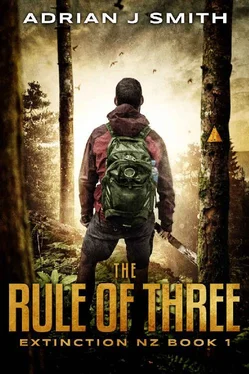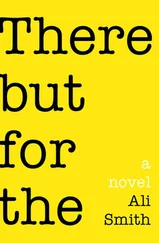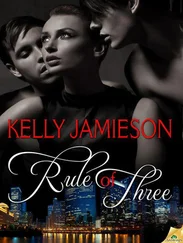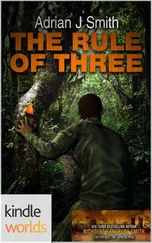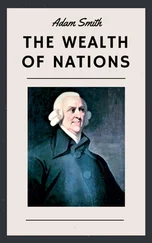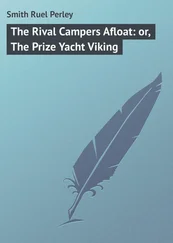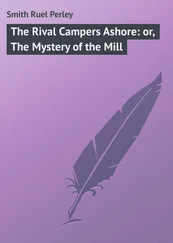One of the Variants kicked the male. One Eye looked down at the slightly overweight man with his shaved head and beady eyes. He hissed at him, shoving his face closer.
“I… I… I don’t know where they are, please…” mumbled the overweight man.
One Eye sniffed him. He could definitely smell them on him. He lashed out and speared the man through the head with his claw. With a satisfied hiss, he lapped up the spilling blood and brain matter.
One Eye turned to the Alpha that had come from the east. “Where?”
The Alpha pushed a skinny male out onto the ground. Skinny held up his hands in surrender, pleading, “Please… please don’t kill me… I know where they are.”
He pointed east, towards the mountains.
One Eye snarled with satisfaction. His anger barely contained, he let out a deafening bellow.
He hauled on four chains, pulling the terrified prey at the other ends towards him. Four children appeared, covered in filth. They were sobbing.
The Alphas smacked their suckers as the gathered Variants howled into the night. The small ones tasted so much sweeter.
One Eye sniffed the skull of the child in front of him and licked the salt off its flesh.
The child began to sob. With a satisfying crunch, One Eye silenced it forever. He moaned with pleasure as he drank the blood and tore into its flesh. Soon the sounds of the other Alphas feeding filled his ears.
The surrounding packs screeched and howled at the smell of the spilt blood.
END OF BOOK ONE.
THE STORY CONTINUES IN THE FOURTH PHASE .
Click here to download!
Ready to continue to Extinction Horizon, Book 1 of the Extinction Cycle series?
CLICK HERE!
Gallipoli:World War One battle fought between the ANZAC (Australia and New Zealand Army Corp) and Turkish forces in 1915. The ANZACs suffered heavy losses, but fought with sheer determination for little gain.
Haka:Tribal war dance performed to intimidate an opponent. Famously performed in modern times by New Zealand sports teams. Each tribe has its own version of the dance.
Hongi:Translates to “The breath of life.” A greeting, where the two greeting each other touch noses and foreheads at the same time. Serves a similar purpose to a handshake.
Iwi:Translates to “people” or “nation”, but it has come to mean tribe. In pre-European times, Maori identified more with a Hapu or sub tribe. Iwi can mean a confederation of tribes.
Kai:Simply translates to “food”.
Kaitiaki:Term used for Guardianship of the Sea and of the Sky. Kaitiaki is a guardian, and the process and practices of looking after the environment.
Kaumatua:Elders in Maori society, held in high esteem. Being the storehouses of tribal knowledge, genealogy and traditions.
Kawakawa:Small tree endemic to New Zealand. Used in medicines and traditional practices.
Kehua:Translates to “ghost”.
Kina:A sea urchin endemic to New Zealand. Considered a delicacy.
Koru:Translates to “loop”. Used to describe the unfurling frond of the silver fern. Signifies new life, growth, strength and peace.
Kumara:A species of sweet potato grown in New Zealand. Traditionally a staple food.
Maori:Indigenous population of New Zealand.
Manuka:Small flowering tree. Famed for its oily timber and, in more recent times, for the honey produced from its flowers. The honey has many beneficial properties.
Mere:Traditional Maori weapon best described as a club. Could be made from a variety of materials. Chiefs had mere made from a hard semi-precious gemstone called “pounamu”.
Moriori:A peaceful indigenous people of the Chatham Islands to the west of New Zealand. Thought to have populated parts of the South Island as well.
New Zealand Flax:Endemic grass plant found throughout the country. Used for variety of reasons. Mainly for weaving traditional Maori objects. Europeans used it as a source of fibre to make ropes, etc.
Pakeha:White or fair skinned New Zealander. Specifically of European descent.
Paua:Endemic species of abalone found around the New Zealand coast.
Pohutukawa:Species of large coast dwelling tree. Often found clinging to cracks and to the side of cliffs. Called New Zealand’s “Christmas tree” because its red flowers bloom in abundance during December.
Powhiri:A Maori welcoming ceremony involving, singing, dancing and finally the hongi.
Paka:An expression of annoyance or anger. Can be used in reference to a person as seen in the film Whale Rider.
Taiaha:A traditional Maori weapon. A close-quarters staff. Made from wood or whale bone. Used for quick, stabbing thrusts and strikes, with fast footwork by the wielder. Often found to have intricate carvings near its tip.
Tangi:A traditional funeral held on a marae (meeting place)
Ta Moko:Traditional tattoos of the Maori.
Tekoteko:Maori term for a carved human figure or head. Sometimes attached to the gable of a house.
Te Reo:The Maori language.
Whanau:An extended family or related community who live together in the same area.
Adrian J Smith is the author of the Extinction NZ trilogy; The Rule of Three and its sequels, The Fourth Phase and The Five Pillars .
He has had a couple of careers. He started his working life as a Painter before switching to Landscape design and construction. He switched back again, and for the last decade he has run his own successful Painting and decorating business.
Adrian lives in Hamilton, New Zealand. A self-confessed book and movie geek. He admits that he is obsessed with Star Wars , Aliens , Lord of The Rings , Harry Potter , Studio Ghibli, and Game of Thrones .
When he isn’t working his day job or writing, Adrian can be found wandering the mountains, hiking, swimming, quizzing, watching movies and of course reading.
You can contact him on:
Facebook: facebook.com/profile.php?id=555762524
Join his group, Guardians of the Apocalypse facebook.com/groups/1228963827222088
Email: adesmithwrites@gmail.com
Website: adrianjonsmith.com
Nicholas Sansbury Smith is the New York Times and USA Today bestselling author of the Hell Divers series. His other work includes the Extinction Cycle series, the Trackers series, and the Orbs series. He worked for Iowa Homeland Security and Emergency Management in disaster planning and mitigation before switching careers to focus on his one true passion—writing. When he isn’t writing or daydreaming about the apocalypse, he enjoys running, biking, spending time with his family, and traveling the world. He is an Ironman triathlete and lives in Iowa with his wife, their dogs, and a house full of books.
Are you a Nicholas Sansbury Smith fan? Join him on social media. He would love to hear from you!
Facebook Fan Club: Join the NSS army!
Facebook Author Page: Nicholas Sansbury Smith
Twitter: @GreatWaveInk
Website: NicholasSansburySmith.com
Instagram: instagram.com/author_sansbury
Email: Greatwaveink@gmail.com
Читать дальше
